
by Grow Up Conference | Dec 17, 2024 | Media Partners, Stratcann
MediPharm Labs Corp. has entered into an agreement for the purchase and sale of its facility in Napanee, Ontario, through a disposition of all of the company’s indirect equity interests in its wholly-owned subsidiary ABcann Medicinals Inc. to Kensana Health for $5.5 million in cash.
Pursuant to the purchase agreement, Kensana Health has agreed to acquire all of the issued and outstanding shares in the capital of ABcann from the company’s operating subsidiary MediPharm Labs Inc.
IF the acquisition of ABcann goes through, Kensana Health will acquire the license in respect of the Napanee Facility as well as the building, land, and equipment. Current commercial agreements and activities of the company will stay with MediPharm Labs.
The deal is expected to close by January 1, 2025, subject to customary closing conditions and receipt of all necessary approvals, as applicable.
As part of the transactions contemplated by the purchase agreement, MediPharm Labs and Kensana Health will form a strategic partnership, through the execution of a comprehensive supply and services agreement, leveraging MediPharm’s advanced GMP manufacturing capabilities. Under this partnership, Kensana Health has agreed to supply select products and services to augment MediPharm’s international brands and to support the company’s growing international customer base.
This strategic transaction, says MediPharm in a press release, aligns with the company’s focus on streamlining its operations and maximizing value for stakeholders. This transaction is also expected to further complement MediPharm’s cash position and allow it to invest in future growth opportunities.
“This Transaction reflects our commitment to enhancing operational efficiency while fostering strong partnerships that expand our global reach,” said David Pidduck, CEO of MediPharm Labs. “By monetizing non-core assets and securing a strategic supply and services agreement, we are looking to ensure that MediPharm is well-positioned to continue delivering high-quality, GMP-certified cannabinoid solutions to our valued partners and customers worldwide.”
For Kensana Health, the deal is expected to support its ongoing United States Food and Drug Administration (FDA) registration process for its novel topical chronic wound treatment, with plans for subsequent approvals in Europe, U.K., Canada, the Middle East, Pacific Rim and Australia.
Ken Clement, CEO and Founder of Kensana Health commented, “As the original founder of ABcann in 2012, I am very grateful to the MediPharm team for facilitating the opportunity for Kensana Health to complete this acquisition.”
Clement goes on to say, “This acquisition represents our commitment to advancing phytopharmaceutical development, specifically targeting severe medical conditions with significant unmet needs. This is a strategic move to expand our pharmaceutical manufacturing capabilities for multiple plants, and not just phytocannabinoids.”
Medipharm Labs brought in $9.8 million in net revenue in its most recent quarterly report for the three months ended September 30, 2024 (Q3 2024), $3.1 million in gross profit, but a net loss of $2.8 million.
Net revenue was up 15% from $8.5 million in the same quarter the previous year, while net loss declined from $4.3 million. Gross profit increased year-over-year from $2.4 million and $3.4 million in the previous quarter (Q2 2024).
The bulk of the company’s net revenue came from sales into the Canadian market ($6.2 million), increased from $5.9 million in the same quarter in 2023. Another $2.5 million in sales were in Australia, up year-over-year from $2.2 million, $1 million in Germany (up from $319,000 in Q3 2023), and $62,000 in other international sales (up from $5,000).
MediPharm Labs was founded in 2015. The Barrie, Ontario facility holds GMP certifications from Health Canada, the Australian Therapeutic Goods Association, and ANVISA (Brazil). The Barrie Facility obtained EU-GMP certification from the LAVG in July 2024. These GMP certifications have been accepted in other international markets, such as Brazil and the European Union.
MediPharm owns two wholly-owned subsidiaries, Canna Farms and ABcann. ABcann’s operations focus on European Union Good Manufacturing Practices related to cultivation and packaging for international markets.
MediPharm announced its plans to close its BC-based Canna Farms facility, and move its medical sales to Ontario in July.
ABcann announced a name change to Vivo in 2018. MediPharms announced the completion of its acquisition of Vivo in 2023.
Related Articles

by Grow Up Conference | Dec 17, 2024 | Cannabis News Wire, Media Partners
The nascent cannabis research field recently hit a major milestone after the U.S. Food & Drug Administration (FDA) finally greenlit Phase 2 of the Multidisciplinary Association for Psychedelic Studies (MAPS) study on the feasibility of using smoked cannabis to treat post-traumatic stress disorder (PTSD) in veterans.
The authorization came after three years of discussion between the FDA and MAPS. Titled MJP2, the study will test the efficacy and safety of inhaling high-THC cannabis in managing PTSD symptoms in veterans compared to a placebo. Nearly 320 veterans from Michigan and three additional states will take part in the study.
The Michigan Veteran Marijuana Research Grant Program, which draws its funding from state marijuana tax revenue, will provide a $12.9 million grant for Phase 2 of the smoked cannabis study.
Although medical cannabis was first legalized in the U.S. well over two decades ago, the drug’s controlled status at the federal level has made it virtually impossible for researchers to study cannabis. However, now that dozens of states have legalized either recreational or medical marijuana and tens of millions of Americans have access to the drug, there is a pressing need for concrete data on the potential risks and benefits of cannabis.
Past studies have already found evidence that marijuana can mitigate some of the symptoms of physical conditions such as epilepsy or chronic pain but many physicians are reluctant to consider cannabis as an alternative treatment to psychological conditions.
The American Psychiatric Association (APA) even published two statements in 2019 stressing against the use of cannabis to treat psychological conditions. The APA specifically cited PTSD as a psychological condition that shouldn’t be treated with cannabis, noting that there simply weren’t enough credible studies that showed its effectiveness against the condition, and said further research would be required to determine if marijuana affects psychological disorders.
Consequently, the FDA’s decision to green light MJP2 is a major step for cannabis research in the U.S. The Phase 2 study reflects how average users typically consume cannabis by using smoking and vaping as the main delivery agents as well as high THC cannabis that’s similar to the product sold in cannabis establishments.
The FDA pushed back against study protocols such as letting study participants self-titrate or determine their cannabis doses, allowing vaping on a preliminary basis, and preventing the researchers from including individuals who had never smoked cannabis in the study. Despite the limitations MAPS researchers are facing, the fact that the study received FDA approval for a second Phase is a major step in the right direction.
Marijuana industry actors, such as Curaleaf Holdings Inc. (CSE: CURA) (OTCQX: CURLF), will be watching to see what findings this landmark study releases and how that could affect the future of marijuana research.
About CannabisNewsWire
CannabisNewsWire (“CNW”) is a specialized communications platform with a focus on cannabis news and the cannabis sector. It is one of 70+ brands within the Dynamic Brand Portfolio @ IBN that delivers: (1) access to a vast network of wire solutions via InvestorWire to efficiently and effectively reach a myriad of target markets, demographics and diverse industries; (2) article and editorial syndication to 5,000+ outlets; (3) enhanced press release enhancement to ensure maximum impact; (4) social media distribution via IBN to millions of social media followers; and (5) a full array of tailored corporate communications solutions. With broad reach and a seasoned team of contributing journalists and writers, CNW is uniquely positioned to best serve private and public companies that want to reach a wide audience of investors, influencers, consumers, journalists and the general public. By cutting through the overload of information in today’s market, CNW brings its clients unparalleled recognition and brand awareness. CNW is where breaking news, insightful content and actionable information converge.
To receive SMS alerts from CNW, text CANNABIS to 888-902-4192 (U.S. Mobile Phones Only)
For more information, please visit https://www.CannabisNewsWire.com
Please see full terms of use and disclaimers on the CannabisNewsWire website applicable to all content provided by CNW, wherever published or re-published: https://www.CannabisNewsWire.com/Disclaimer
CannabisNewsWire
Denver, CO
www.CannabisNewsWire.com
303.498.7722 Office
Editor@CannabisNewsWire.com
CannabisNewsWire is powered by IBN

by Grow Up Conference | Dec 17, 2024 | Canadian Evergreen, Media Partners
Teen drug use hasn’t rebounded from its drop during the early years of the COVID-19 pandemic, according to the results from a large annual national survey released Tuesday.
About two-thirds of 12th graders this year said they hadn’t used alcohol, marijuana, cigarettes or e-cigarettes in the previous 30 days. That’s the largest proportion abstaining since the annual survey started measuring abstinence in 2017.
Among 10th graders, 80 per cent said they hadn’t used any of those substances recently, another record. Among 8th graders, 90 per cent didn’t use any of them, the same as was reported in the previous survey.
The only significant increase occurred in nicotine pouches. About 6 per cent of 12th graders saying they’d used them in the previous year, up from about 3 per cent in 2023.
Whether that has the makings of a new public health problem is unclear. The University of Michigan’s Richard Miech, who leads the survey, said: “It’s hard to know if we’re seeing the start of something, or not.”
The federally funded Monitoring the Future survey has been operating since 1975. This year’s findings are based on responses from about 24,000 students in grades 8, 10 and 12 in schools across the country. The survey is “one of the best, if not the best” source of national data for substance use by teens, said Noah Kreski, a Columbia University researcher who has studied teen drug use.
Early in the pandemic, students across the country were told not to go to schools and to avoid parties or other gatherings. They were at home, under parents’ supervision. Alcohol and drug use of all kinds dropped because experimentation tends to occur with friends, spurred by peer pressure, experts say.
As lockdowns ended, “I think everyone expected at least a partial rebound,” Miech said.
Even before the pandemic, there were longstanding declines in teen cigarette smoking, drinking and use of several types of drugs. Experts theorized that kids were staying home and communicating on smartphones rather than hanging out in groups, where they sometimes tried illicit substances.
But marijuana use wasn’t falling before the pandemic. And vaping was on the upswing. It was only during the pandemic that those two saw enduring declines, too.
Some experts wonder if the pandemic lockdowns had a deeper influence.
Miech noted that a lot of teens who experiment with e-cigarettes or drugs start in the 9th grade, sometimes because older adolescents are doing it. But the kids who were 9th graders during the lockdowns never picked up the habit, and never had the opportunity to turn into negative influencers of their younger classmates, he said.
“The pandemic stopped the cycle of new kids coming in and being recruited to drug use,” Miech said.
Mental health may also be a factor. There were increased reports of depression and anxiety in kids after the pandemic began. Depression is often associated with substance use, but some people with depression and anxiety are very wary of messing with drugs, said Dr. Duncan Clark, a University of Pittsburgh psychiatrist who researches substance use in kids.
“Some teens with anxiety are worried about the effects of substances. They may also be socially inhibited and have less opportunity to use drugs,” Clark said. “It’s a complicated relationship.”
The Associated Press Health and Science Department receives support from the Howard Hughes Medical Institute’s Science and Educational Media Group. The AP is solely responsible for all content.
Mike Stobbe, The Associated Press
To get the week’s latest must-read stories from the cannabis world direct to your inbox, sign up for our weekly newsletter at canadianevergreen.com. You can also follow us on Facebook, Instagram and Twitter.
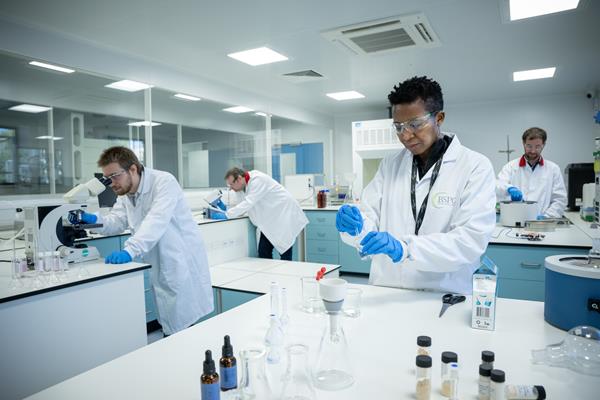
by Grow Up Conference | Dec 16, 2024 | Grow Opportunity, Media Partners
(GLOBE NEWSWIRE) Vancouver – Brains Bioceutical Corp. a global leader in natural, GMP-compliant cannabinoid Active Pharmaceutical Ingredients announces the expansion of its industry-leading offering. Cannabinol (CBN) is available as an EU-GMP certified API, D9-Tetrahydrocanabinol (THC) is in a solid crystalline form, undergoing enhanced stability optimization work and final validation work is being undertaken on Cannabigerol (CBG).
These new additions complement Brains Bio’s current portfolio, with the CBD API being used in over 30 clinical and pre-clinical studies, including a completed Phase III Refractory Epilepsy Study – submitted for Marketing Authorisation – and a Phase II Opioid Use Disorder Study. With immediate global sample distribution, Brains Bio unlocks new avenues for clinical research, product development, and therapeutic innovation.
Unveiling the Next Wave of Cannabinoid-Based Therapies
Brains Bio’s expanded portfolio reflects the company’s dedication to the development of cannabinoids for pharmaceutical research and development. Their offerings include formulated products and APIs compliant with the Ph. Eur. Monograph and ICH Q7 requirements, designed to support regulatory-approvable clinical programs targeting critical unmet medical needs. These APIs, with potential applications for a wide range of therapeutic uses, including neurological disorders, chronic pain, and inflammatory conditions, are poised to drive groundbreaking clinical advancements.
Building on Existing Success Stories
The pharmaceutical industry has already witnessed the successful integration of cannabinoid-based medications. Several FDA- and EMA-approved drugs showcase significant clinical benefits, including:
- Epidiolex (CBD): An oral solution for treating epileptic seizures associated with Lennox-Gastaut and Dravet syndromes (FDA/ EMA-approved).
- Marinol & Syndros (Dronabinol): Formulations for chemotherapy-induced nausea and vomiting, and AIDS-related anorexia (FDA/EMA-approved).
- Sativex (CBD/THC): A treatment for spasticity in MS and other neurological conditions (EMA-approved).
These successes highlight the therapeutic potential of cannabinoid-based therapies and their growing acceptance within the medical community. with Brains Bio remaining dedicated to advancing the scientific understanding of cannabinoids.
“A Milestone for the Pharmaceutical Industry”
“The introduction of high-quality CBN API, D9 THC and CBG is a landmark moment for Brains Bio, and for the entire pharmaceutical industry,” said Ricky Brar, CEO and Chairperson of Brains Bioceutical Corp. “These products empower researchers and drug developers to push the boundaries of cannabinoid science, accelerating the delivery of transformative therapies to patients worldwide. This achievement reflects our unwavering commitment to providing APIs that meet the highest standards of safety, quality, and consistency.”
A Market Poised for Growth
The Global Cannabinoid Derived Pharmaceutical Market Research Report 2024 projects a significant rise, from $884.3 million in 2021 to $4.87 billion by 2034 (CAGR of 13.4%). This surge reflects the increasing recognition of cannabinoid therapies’ effectiveness in addressing a wide range of medical conditions.
Brains Bio’s API portfolio represents the next frontier, providing pharmaceutical innovators with a robust and compliant ingredient to expedite the development of regulatory-approved cannabinoid-based treatments.
About Brains Bioceutical Corp.
Brains Bioceutical Corp. is a global leader in developing and manufacturing natural cannabinoid APIs for the pharmaceutical industry. Their focus on advancing cannabinoid research translates into innovative solutions that address critical unmet medical needs, transforming the future of medicine.
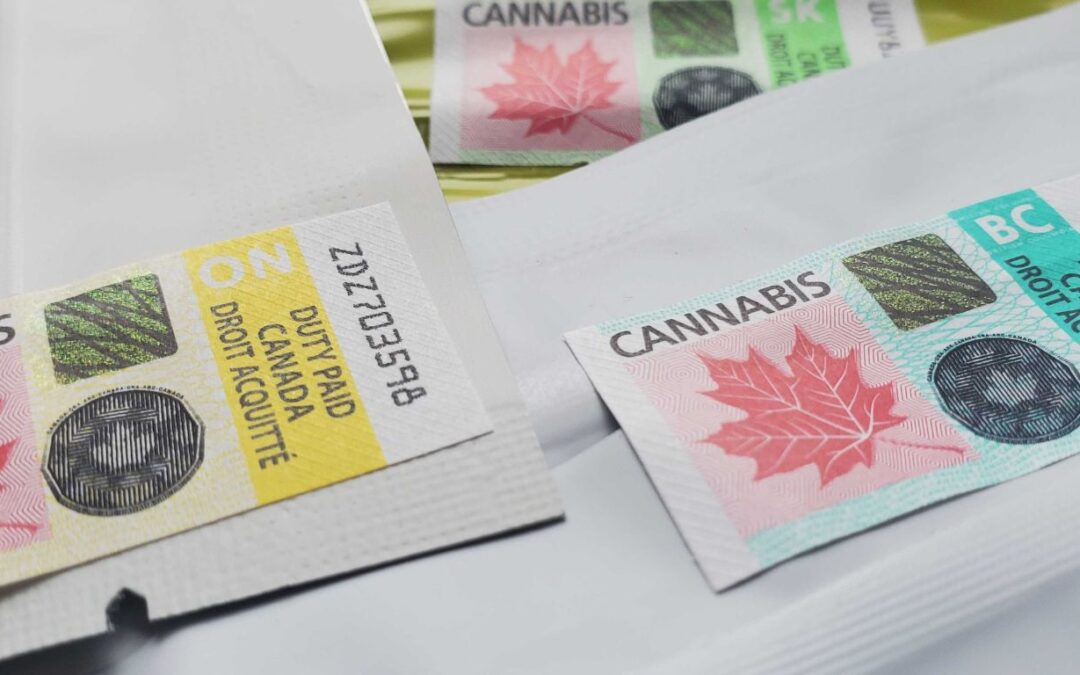
by Grow Up Conference | Dec 16, 2024 | Media Partners, Stratcann
The federal government will explore a single, harmonized federal excise duty stamp as part of a red tape reduction measure outlined in its 2024 Fall Economic Statement.
More info on the proposal is expected as part of Budget 2025, which is anticipated in February 2025.
The move from requiring producers to use 13 different provincial and territorial excise tax stamps to a single, harmonized stamp is something the industry has said would save cannabis producers time and money. In a meeting in October, The Canadian Cannabis Council (c3) called for such changes, saying it would go a long way to addressing some of the logistical challenges the current tax stamp program creates.
Paul McCarthy, the president of C3, says he’s happy to see the government acknowledging the issue, but is frustrated that this announcement used a lot of vague wording rather than committing to immediate action.
“What they should be doing is implementing this,” says McCarthy. “It will help businesses. There’s no downside for anybody anywhere, but they still want to wring their hands and look at it more. Talk about a government that is not in touch with the needs of the sector.”
McCarthy adds that he was cautiously optimistic that the fall 2024 statement would have included some movement of the tax, but also acknowledges that expectations have been low due to the complexity of such a change. Although the industry has been asking for the excise rate to be lowered, many in the industry say a single stamp would at least relieve some of the financial burdens associated with the current stamp regime.
“To cut red tape for growing businesses and help them to succeed, the 2024 Fall Economic Statement also announces the government’s intent to explore a transition from cannabis excise duty stamps specific to each province and territory to a single, national stamp. This would make it easier for regulated cannabis producers to ignite new business opportunities in other provinces. More details will roll out in Budget 2025.”
In a post on C3’s website, McCarthy added: “The government’s continued neglect of the cannabis sector is alarming. Their unfair taxation policies are creating an unsustainable environment for legal businesses, forcing many to close their doors and driving consumers back to the illicit market.”
Earlier this year, Orville Bovenschen, President of Pure Sunfarms, told StratCann that such a move could save his company around a million dollars a year. However, these savings would not be limited to just larger companies like Pure Sunfarms.
“It’s not just us,” said Bovenschen. “If you look at small producers, medium-sized producers, it’s very complicated for them as well. A change like this can make it easier for us to operate and become more profitable. I think this is much easier to achieve before we get to the bigger issue of the excise tax itself.”
While changing the actual excise rate is complicated, he added, solutions like these could make more sense in the more immediate term.
“I think it could be an achievable win. Nothing is easy but I think it can be a much needed win for everybody. For the government, for us. I don’t think there’s a single person that isn’t aligned with this idea of having one single stamp for the entire industry.”
Janeen Davis, VP of sales at DEALR Cannabis (formerly JVCC), which distributes cannabis, often from micro cultivators and processors, in BC and Ontario, says the change will definitely help the company save time and money, even if it doesn’t go as far as she would like to see in terms of lowering the actual excise rate itself.
“We spend so much time just managing our stamp inventory for the provinces,” explains Davis. “Managing stamp inventory can be a major administrative burden to all processors in Canada, and I think if there were just one excise stamp, it would be something to celebrate.”
Gord Nichol, the owner of North 40 Cannabis, a micro producer in Saskatchewan, though, says the move doesn’t address “the giant elephant in the room” that is the need for lowering the excise rate itself, especially for smaller producers like his company.
“Excise tax reduction for micro processors is the only issue that might save me”, Nichols tells StratCann.
Such a move would require the support of the provinces, who receive 75% of every dollar the federal government collects from the federal excise tax.
Some in the industry, speaking with StratCann strictly on background, have also suggested that the recent stepping down of Chrystia Freeland from the role of Finance Minister could bode well for efforts at lowering the excise rate itself. In the past, some have suggested that Freeland was one of the main last-minute impediments to such changes in previous federal budgets.

by Grow Up Conference | Dec 16, 2024 | Media Partners, The New Agora

Divide & Conquer: The Occult Game of Stalking
By Bernhard Guenther
We don’t learn from history [be it the hidden, alternative, actual, or official history] because an intellectual understanding of it is useless if it is not matched with the individuation process of shadow integration and the rebirth of the true Self, which is part of the Great Work to anchor the Divine force [or Kingdom] within.
Despite the deceptive external technological progress, human consciousness [the inner life] has undergone no significant transformation.
Hence, “history repeats” in different disguises as “fate” because we try to fight shadows on the wall like in Plato’s allegory of the cave; just as people fight now shadows manifested from the collective unconscious as everyone desperately cheers/identifies with their chosen side they are manipulated to select.
The revolutionary impulse at any given time and age provides some relief and apparent “change,” but only on the superficial surface and in the short term.
Gurdjieff called this deception the trap of the revolutionary mind because it is a mechanical revolt by masses of people who are acting mechanically and are not conscious but easily emotionally manipulated. There is no change in Being and consciousness.
There is only externalization and projections as if evil only exists “out there” but not within oneself, unconscious. Religions, especially Christianity, have been hijacked a long time ago and made God into a human image who supposedly favors one nation over another, punishes and rewards with literal concepts of heaven and hell based on human morals. But the Divine doesn’t act on nor judge according to human morals or logic.
As Satprem noted:
“…But the supramental [divine] power does not obey our logic or morality; it sees far into space and time, and it does not try to do away with evil in order to save the good, nor does it work through miracles.
It frees the good that is within the evil, applying its force and light on the dark half so it consents to its luminous counterpart. Wherever it is applied, the immediate effect is to touch off a crisis; that is, to place the shadow in front of its own light. It is a stupendous evolutionary ferment.”
Dogmatic religion has also wrongfully [but by design] externalized evil as a personification of “Satan” along with the “Jesus savior program.” It is a brilliant move of the occult matrix architects behind the major religions and cleverly mix truth with lies, so people also take the bait and swallow the lies.
As Michael Topper wrote in 1994, published in the “The Matrix” books by V. Valerian (nothing to do with the film that came later):
“…The important thing to remember is this: there is NOT a “unified conspiratorial activity” going on here in the hierarchy of government. The “divide and conquer” effect is also manifest at this level and suits the [non-human occult hostile forces] purposes to a “T.”
Such activity at ALL levels is consistent with their program of STALKING, in which confusion and cross-purpose prevents a clear perception on the part of the Stalkees. [Any] “secret superiors” are just that: SECRET. Any organization you can name, or about which you are AWARE, are merely “outer circles.”
What is the designed objective of this STALKING? It is two-fold:
First, the effect of Stalking is sort of like stampeding a herd of cattle. Bit by bit, they are consolidated into a “negative mode” which consists of the idea of “us vs them.”
Even though, on the surface, it may seem that this “mode” is positive , (i.e. save the world because it is “wrong” or flawed, or blighted with original sin or whatever) the very fact that it is formed in the “dominator” mode of perceiving salvation “outside,” means that it can more easily be “taken over” body, mind and soul at a level that is “unseen and unseeable.” In other words: Satan CAN and most often DOES appear as an Angel of Light!
It is only at the lower levels of the power structure that many still believe they are playing out the basic’ antagonism’ and’ self- protection’ roles. They believe that “sending love and light” to those “in need” is appropriate, without realizing that this activity is predicated upon a deep belief that there is something wrong, in error, in rebellion, and thus becomes again, “us vs them.”
The primary object of Negative stalking is to persuade through strongly influenced, but not robotic, behavior patterns, the Free Choice of the targeted CONSCIOUSNESS to align with negative higher-density existence.
…Thus we see that the efforts to “save the world” via “punishment of the wicked,” or “conversion to the light” or “spiritualizing matter with love,” are all expressions of the fundamental desire to UNDO CREATION; to KILL GOD!
Through the idea that “evil/darkness” is a rebellion, a fault, a thing to be done away with, the “twist” is introduced that lays the groundwork for domination and absorption.
This is why, even though promulgated “Christian principles” seem to be good and uplifting, and, in fact, CAN be, the fundamental reason is flawed and also expresses itself in Christian history in such ways as the many slaughter that have been instituted in the name of Christianity….”
– Michael Topper, The Positive/Negative Realms of Higher Densities
It is always much easier to project evil/darkness externally instead of facing your own darkness and the lies you tell yourself about yourself and your life. The battle within requires a more courageous warrior attitude than any battle “out there.”
This doesn’t mean refraining from outward action—far from it—but it needs to come from within, grounded in the real “I,” not the conditioned/wounded ego-personality with its programmed identifications (with a group, flag, religion, ideology, etc.), which is easily misled, tempted, and manipulated via the trap of identification.
This mechanical revolt is also what the matrix forces and ‘powers that be’ count on with their classical tactics of Problem-Reaction-Solution and Divide & Conquer agenda, which we see happening once again right in front of our eyes as people choose their sides, either standing up for Palestine and wanting to crush Zionism or blindly supporting Israel’s “right to defend itself.”
The ones who just ” pray” for peace without making any effort to engage in the Work are also easily misled.
Both sides are played by occult forces pitting humans against humans for maximum “loosh” output to be fed upon and create the right conditions for absolute “domination and absorption,” as Michael Topper alluded to—the end game.
This game has been going on for thousands of years, and we are reaching its climax. “It’s either Truth or Abyss,” as Sri Aurobindo and The Mother foresaw.
As long as humans mistake physical reality as the only reality [stuck in the outdated age of materialism] or that they are the only higher intelligent “lifeform” and deny the supra-physical [metaphyscial] nature of forces [I’m not talking about “aliens” or ETs] that move and act on humans outside their awareness [and have so for thousands of years], nothing will change fundamentally, and humans keep being puppets for occult [hidden] forces under the illusion of “free will.”
Sri Aurobindo hinted at it over 100 years ago:
“Look at what happened in 1914 – or for that matter at all that is and has been happening in human history – the eye of the Yogin [spiritual seeker] sees not only the outward events and persons and causes but the enormous forces which precipitate them into action.
If the men who fought were instruments in the hands of rulers and financiers, these, in turn, were mere puppets in the clutch of those [occult] forces.
The apparent freedom and self-assertion of our personal being to which we are so profoundly attached conceal a most pitiable subjection to a thousand suggestions, impulsions, and forces which we have made extraneous to our little person.
Our ego, boasting of freedom, is at every moment the slave, toy, and puppet of countless beings, powers, forces, and influences in universal Nature.
When one is habituated to see the things behind, one is no longer prone to be touched by the outward aspects – or to expect any remedy from political, institutional, or social changes; the only way out is through the descent of a [Divine] consciousness which is not the puppet of these forces but is greater than they are.”
We will “repeat history” in endless time loops over lifetimes and lifetimes like in a frequency prison caught in the illusion of change or experience a collective cataclysm similar to ancient Atlantis until a significant part of humanity starts to look within sincerely and begins the Great Work of nothing short, but the transformation of consciousness and anchoring the divine supramental force for ONLY THAT will bring true change.
As within, so without. Any blaming, complaining, punishing, retaliation, and victimizing will only prolong the inevitable…and waste a lot of time and energy while feeding the matrix forces, literally and figuratively speaking.
We don’t get to move on until we have learned our [soul] lessons, individually and collectively.

by Grow Up Conference | Dec 16, 2024 | Media Partners, The New Agora
Divide & Conquer and the Trap of Identification
By Bernhard Guenther
Divide & Conquer is a term used to describe the ancient game of controlling all sides of a debate/issue/conflict and pitting the human groups involved against one another – not only to manipulate them into acting out in accordance with a specific result in mind, but to create the right emotional “loosh” frequency (energetic ‘food’ to be used as sustenance by hyperdimensional forces) whilst keeping humanity locked within a frequency prison of endlessly-repeating trauma cycles. This model is the basic modus operandi of the hyperdimensional matrix control system that has been working through human civilizations for thousands of years. The masses react mechanically (under the illusion of “free will”) to the problem/reaction/solution stimuli, subjected to interferences and manipulations of the occult forces who exist beyond their five-sensory perceptions while they remain distracted by the shadows projected onto the wall of their endarkened cave.
The very foundation of this Divide & Conquer tactic – established on unseen levels by archonic forces – is established via the programming of humanity with erroneous beliefs and ideologies (which act as the ‘software’ running through the ‘hardware’ of genetic modifications that resulted in the “fall” from our original, fully-accessible DNA activated state), and subliminally intruding upon the human mind through various mechanisms in an attempt to deviate humanity away from truth and conscious evolution (i.e., activating the higher centers/DNA). By accepting these beliefs – by IDENTIFYING with them, especially – and promoting them to the world at large, people are assisting the negative realm agenda out of their own (manipulated) free will. It is a very “simple” (yet cunning) set-up, for most people do not question these beliefs, their thoughts, nor their resulting actions and emotional reactivity. It’s an excellent strategy from the archonic perspective – a “stupendous maneuver” of “the predator that took over humanity”, as Don Juan Matus said:
“In order to keep us obedient and meek and weak, the predators engaged themselves in a stupendous maneuver – stupendous, of course, from the point of view of a fighting strategist. A horrendous maneuver from the point of view of those who suffer it. They gave us their mind!…Through the mind, which, after all, is their mind, the predators inject into the lives of human beings whatever is convenient for them.”
Many other esoteric and shamanic teachings have talked about the same occult force feeding on humanity’s trauma through organized conflict (from interpersonal to international levels). I have explored this topic in-depth in past essays: “Timeline-Reality Split, Frequency Vibration, and the Hidden Forces of Life” and “The Perilous Path Towards Awakening”. The so-called “alien invasion” (an issue that does not entail what many people “assume” it does) has already happened eons ago, and is an on-going operation which lies behind the veil of awareness, outside the scope of our five-sensory perception.
“[…] We have to understand here that the true Negative Realm agenda is to “eat consciousness.” So, this actually prevents an overt “take-over” in literal, physical terms. If an “invasion” was detected, this would mean that the veil would be lifted and all would see the “man behind the curtain” and would be disgusted and turn away. Just as in the “Wizard of Oz,” those Ruby Slippers have to be obtained VERY CAREFULLY!
Gathering the essence is an art of great subtlety! The “negative alien plan” is, in its purest sense, STALKING.
The aim of Stalking is to create a completely controlled artificial environment composed of thoroughly predictable human behaviors – made predictable because they have been programmed to respond to cues of conditioning.
[…]
For centuries these programming signals have been being set up – either because of time travel capabilities, or because of actual historical presence. Various prophets or religious leaders have been influenced to preach, or teach or prophesy philosophies designed to lay a foundation for later take-over – possibly in our present time.
[…]
A lot of people think that the “alien invasion scenario” is a ruse concocted by the government to create the impression that there is a forming “threat,” thereby enabling the institution of a New World Order. But, this idea is based on a misrepresentation of the process just described.
The important thing to remember is this: there is NOT a “unified conspiratorial activity” going on here in the hierarchy of government. The “divide and conquer” effect is also manifest at this level and suits the alien purposes to a “T.” Such activity at ALL levels is consistent with their program of STALKING, in which confusion and cross-purpose prevents a clear perception on the part of the Stalkees.
Yet, at some deep level there may be a direct conspiratorial interaction between the “secret government” and the negative aliens… but it is unlikely that any name of those involved would be recognized by anyone, no matter how “in the know” regarding the subject. These “secret superiors” are just that: SECRET. Any organization you can name, or about which you are AWARE, are merely “outer circles.”
What is the designed objective of this STALKING?
The effect of Stalking is sort of like stampeding a herd of cattle. Bit by bit, they are consolidated into a “negative mode” which consists of the idea of “us vs them.” Even though, on the surface, it may seem that this “mode” is positive or STO (Service to Others), (i.e. save the world because it is “wrong” or flawed, or blighted with original sin or whatever) the very fact that it is formed in the “dominator” mode of perceiving salvation “outside,” means that it can more easily be “taken over” body, mind and soul at a level that is “unseen and unseeable.” In other words: Satan CAN and most often DOES appear as an Angel of Light!
[…]
It is in this understanding that we find our way out of the trap. It isn’t easy, but it is a way.
The primary object of Negative stalking is to persuade through strongly influenced, but not robotic, behavior patterns, the Free Choice of the targeted CONSCIOUSNESS to align with negative higher-density existence. Because, in the Long Run, the object is the “eating” of functioning units of consciousness by the negative hierarchy, with Free Will intact! It is not good food otherwise!”
– Michael Topper, The Positive/Negative Realms of Higher Densities
The Trap of Identification and Group Consciousness
We can see the matrix strategy of stalking via programming people with religious dogma (any religion, from ‘indigenous’ to Abrahamic…it must also be mentioned that atheism – the other side of the belief coin – is, in fact, another archonic mind control program of reductionist materialism) and corrupted spiritual teachings (as we can see in the distortions offered up by the so-called New Age Movement). However, many people who can see through the deception on that level are not always aware of how the Divide & Conquer manipulation operates in “less obvious” ways, via “socially accepted” beliefs, ideologies, and institutions – all of which are also installed into our mind-patterns by occult archonic forces, manipulating us like puppets on strings.
To put it bluntly, the moment you identify yourself as a liberal, progressive, conservative, democrat, green, republican, anarchist, libertarian, atheist, christian, buddhist, muslim, etc. and/or identify yourself with any ideology/belief system, be it socio-political (from far left to far right and anything in between; socialism, communism, capitalism, fascism, etc…..any “-ism” ) or religious/spiritual dogma (including the religion of government)…if you support/vote for any politician/party…if you identify yourself with a flag, a nation…if you identify yourself with any social, political, religious, spiritual, group/movement/tribe…you are contributing to the ongoing creation process of division, separation, and fragmentation. This process, in turn, fuels the Divide & Conquer frequency – regardless of your well-meaning intentions – for one side/identification/ideology (that you support/consent to) always creates the other ‘controlled opposition’ side, with all its fragmented variations. It’s the game/trap of duality.
“The more importance someone attaches to a determination of her identity, the more she divides herself from the unbounded reality of wholeness. A narrowing attachment to identity creates strife not just within an individual, but in society at large. In his book ‘Identity and Violence’, Amartya Sen argues that the more narrowly people ‘identify’ themselves by race, gender, status, religion, heritage or nationality, the more prone they will be to committing violence.
That makes sense when we understand ‘objective’ identifications as top-down phenomena: ideas about how one should be are imposed onto the self. This is already a form of violence in which idea dominates and silences being. When someone adopts a categorical standard for how a human should be, it becomes all too easy to turn that violence against others – even friends, neighbors or family members. I believe that the most dangerous people are those who feel their ideas about the Present more keenly than they feel the Present itself.”
~ Philip Shepherd
All of these external approaches and conditioned identifications are based on mind and thought – the over-riding male aspect of consciousness (regardless of gender). It cannot see/perceive wholeness – it remains adrift from the present moment, is caught in the linear time trap (past or future), always dissecting, dividing into parts, imposing premature “solutions” to a fragmentized view of the world and reality, mistaking symptoms for causes…blind to both the mighty occult forces (and Nature’s/Divine Will) acting on and through us. It’s a closed loop and a downward spiral, creating more entropy, division and separation.
This head-centric existence is disconnected from the feminine aspect of consciousness that’s rooted deep in the body, which only perceives wholeness (beyond the five senses), interrelationship and true oneness; this Being-ness is fully embodied, not adhering to any external authority/group/movement and their ideas and ideologies of what one “should” do. This ‘receptive/flow’ state is connected to – and ONLY “listens” to – Nature, the Divine, and non-verbal guidance within (which is itself only accessible through partnering with the “eternal Now”, which the mind alone cannot access); it respects the individually-unique expression of the Divine at any given evolutionary stage (level of Being), for “oneness” does not correlate to “the same”….every expression of the Whole is a unique signature of Source Consciousness.
However, the core issue goes beyond a person’s identification with beliefs and ideologies – or rather, how any of these identifications mentioned above might lead to actions/behaviors that are also in alignment with the negative realm agenda (and represent Service To Self motivations).
If you tell others how they “should” live – or try to implement/support a system/ideology with certain rules that everyone “should” obey, or certain lifestyles everyone “should” live by…if you identify with a particular lifestyle (including the identification with/attachment to a certain diet, preaching what people “should” or “shouldn’t” eat, coming from a moral superiority complex ) because you think/believe that will “save” the world or humanity, or is more “spiritually-advanced”…you are caught in the trap of the homogenization of humanity (the craving to make everyone the same). This ideology also displays traits of the martyr/savior complex, which is a trap in itself, especially if you see yourself as “better” than – and thus, look down upon – others (ie., the trap of superiority)…judging people who don’t do as you do (as opposed to discerning how their and your own thoughts/beliefs are curtailing their/your sovereign expansion)….and in that state of supremacist disassociation, “THE MATRIX HAS YOU”.
When we project onto others what works for us – and try to “make everyone follow the same do/don’t script” – we fall into the aforementioned trap: the Homogenization of Humanity (confusing unity with uniformity). This trap is the underlying agenda of the Matrix, playing out on unseen levels and through a myriad number of STS (Service to Self) behaviorisms that are masquerading as operating on STO (Service to Others) frequencies. We see this mechanism manifesting on a global scale through the roll-out of a socialistic New World Order agenda, but it’s also found embedded within many spiritual and alternative circles/groups, and even in the so-called “truth movement” (whose members, ironically enough, may even be aware of the NWO agenda, albeit on a superficial 3-D level).
On a personal note, I don’t belong to (nor promote) any group, nor do I use any one particular work/teaching/modality as a sole foundation – or “lens” – to look through, nor do I see any one thing as THE answer/way, for that doesn’t exist in my experience…as a result, I don’t attach myself to any “spiritual/esoteric” group/movement. I’ve been there, done that, and have dealt with the resulting trap of unconscious hive/group-mind thinking, which is not obvious at all when you are caught in its web. I learned this the hard way, when I failed to trust/heed my intuition with regards to a personal disagreement I felt with the “group consensus” (based on my own personal experience/intuition/research), which resulted in me not speaking up (based on insecurity, lack of self-love and wounded “need to belong”) so that I wouldn’t be rejected/attacked by the group I belonged to, and identified with.
“Insecurity and anxiety also motivates us to form and join groups. Being a part of a group relieves us of anxiety because it makes us feel like we are not the only ones who feel insecure about a particular thing. We often form groups with individuals who have similar insecurities. Having similar [unconscious] insecurities cause us to have similar desires from the perspective of the internal conflict model…Thus, the more insecure and anxious we are, the more motivated we are to form and maintain our own groups.”
– Toru Sato, “The Ever-Transcending Spirit: The Psychology of Human Relationships, Consciousness, and Development”
I see this “cultish” thread weaving through many groups to varying degrees, especially when a group is centered around one particular teaching/source or “awakening modality” that promises “enlightenment”, “DNA activation”, etc. – which results in (unconscious) hierarchy and dogma. It shows itself when group members (mechanically) always agree with each other, creating an “echo chamber” that never sincerely questions the validity of the source/teachings they identify with and follow, but instead take everything as the 100% ‘gospel’ truth. It is also readily apparent when the group founder/leader attacks anyone who doesn’t agree with her/him (or gets triggered easily), with all of the group members jumping on the bandwagon, attacking the “outsider”. These behaviours create and feed the Divide & Conquer frequency.
If there’s one thing I’ve learned on my own path – via experience and working with people one on one for ever a decade – it’s that what works for one person may not work for another, and there is no judgment in that. Anyone who claims that their particular work/teaching is the “best” or “only way” – if there is obvious dogma, claims to “save the world”, etc. – is someone who has been influenced by both Matrix STS thinking and the virus of “homogenization”. These individuals do not understand the vast differences that exist between levels of Being, and the soul lessons awaiting each person on their particular, unique path towards awakening.
“When someone openly regards their own systems of thought as monumentally important, they are divulging a deep crack in their own core. An inner struggle is being played out publicly. Still they insist that they are altruistically devoted to just getting the information out, serving as a conduit for sacred knowledge, helping the global awakening, serving the planetary spirit. Or some shit like that.
Many people put an artificial sealing over their work and research, getting stuck in a tunnel vision of topics they keep focusing on, trying to explain everything through it instead of being truly opened minded and looking at the many other angles of our multifaceted reality. Don’t attach yourself to anything you can’t honorably walk away from. Keep free and flexible. Have the courage to discriminate. Learn to know when you are hearing dogma. Know when you are hearing the shriek of the ego.
The power in you is your uniqueness and individuality. How you see and move in the world is a precious bequest to the divine source from where you came and where you go back to. If you walk around any city, you will see people choosing not to control themselves and therefore they become followers, not independent, not individuals, not pioneers, not explorers. It’s an anti-human way to follow.
The biggest threat the establishment has is individuality, people who think for themselves, people who say: no more of this group mentality. I don’t care what they are following. It could be the best yoga, the best spiritual guru, it could be beautiful ancient hindu, german or french texts, whatever. I don’t care. If you are following, you are doing it wrong. The only path is the path of the Individual. That’s what it is all about and what you are here for.
There is an esoteric axiom, all untrue things eventually destroy themselves. Empire, as long as “I” get out of the way, is burning itself out and it’s a natural power of the evolutionary process. In mystical studies you’ll find that this has happened before. It has happened periodically over millions of years, not thousands, but millions of years.
And the message is always, look humans, you are super powerful. It’s divine will, a metaphysical spark of creation within you, call it what you wish. To be here is to grow and explore as an Individual. If we are not doing that, we give that power away, we surrender it, and there are other beings in this world who will gladly take that and do something else with that. And that’s how empire rises.”
– Neil Kramer
Beyond understanding (and seeing) how this archonic mind manipulation virus is blatantly working through the machinations of consensus reality cult-ure, the awakening process involves grasping how these programs can arise through ourselves in everyday life situations – especially via group identification (in all its forms and variations). This is an important key in establishing sovereignty, as vital as energetically-freeing ourselves from “external” control. There can be no true sovereignty as long as we remain slaves to our own mind-loops and thoughts, chained as they are to the beliefs, group-think, and ideologies which we find ourselves identifying with.
We mistake unity for uniformity. There are vastly-different levels of Being that exist within the seven billion people currently residing on Earth. ALL humans are a fractal expression of the One/Divine (including those whom one might consider “evil”), whose lives are playing themselves out on a co-creative stage. “We” are being pushed by the Divine force to let go of these illusory identifications we take so much pride in attaching a sense of self to – and, in doing so, truly making a courageous choice in evolving towards a completely different state of consciousness/Being…not merely a shift, but a quantum leap
 This is not going to happen overnight, let alone in our “lifetime” nor in the near “future”. It’s a slow and tedious process, for the resistance contained in humanity’s lower nature (maintained and fed by occult forces) is strong. However, the more we hold onto these mind constructs/identifications – and operate/live from them, without any sincere internal effort to become conscious transducers for Divine Will – the “harder” we make it on both ourselves and the rest of the world…again, this is the case regardless of our well-meaning intentions.
This is not going to happen overnight, let alone in our “lifetime” nor in the near “future”. It’s a slow and tedious process, for the resistance contained in humanity’s lower nature (maintained and fed by occult forces) is strong. However, the more we hold onto these mind constructs/identifications – and operate/live from them, without any sincere internal effort to become conscious transducers for Divine Will – the “harder” we make it on both ourselves and the rest of the world…again, this is the case regardless of our well-meaning intentions.
It will get more intense and chaotic as the journey continues, and we have seen nothing yet. Usually, people do not question their ingrained beliefs – nor engage in sincere self-work – until they suffer, and there are vastly-different lessons for each and every individual to take on-board.
During this Time of Transition, the Light and Dark are increasing exponentially in parallel patterns. The Awakening process does not consist of a linear upward movement which bequeaths only love, bliss, and peace; rather, it is a spiral, expanding in all directions, up and down, in and out, bringing awareness to All That Is. You cannot reach the light without having fully explored the dark, for all is coming forth to be acknowledged – to come into the light, brought into awareness, and to be made conscious. It is what the path of conscious evolution implies.
“The higher one rises, the farther one is pulled down. Evolution does not move higher and higher, into an ever more heavenly heaven, but deeper and deeper. Each evolutionary cycle closes a little lower, a little nearer to the Center where the supreme High and Low, heaven and earth, will finally meet….The more Light [the seeker] possesses, the more darkness he/she uncovers.”
– Satprem
“No tree, it is said, can grow to heaven unless its roots reach down to hell.”
– Carl Jung
“None can reach heaven who has not passed through hell.”
– Sri Aurobindo
The Bigger Picture and Mind Trap
The potential for an “awakening” has never been greater, yet at the same time, the potential for distraction and deception has also increased (especially with the dawn of transhumanism), for the occult hostile forces would never relinquish their grip on a food source so easily. The ‘dramas’ will continue to build up in intensity until “we” – or a certain fraction of humanity – can/will transcend this dualistic fear-based mutant mind-matrix (via esoteric self-work, acting as embodied frequency anchors of the Divine Force).
Yet, this opposition of “dark vs. light” also serves as a teaching-function, and creates the necessary friction to ignite the alchemical fire required for the evolution of consciousness. All there is, exists as lessons. This is the whole “purpose” of duality (hence “evil” serves a teaching function, as it manifests as part of the One as well). This 3rd Density existence is an intermediate stage/phase, the threshold to cross (“many are called, few choose to answer the call”) before we become self-realized, soul-individualized beings with a fully-activated genetic birthright to explore…transcending even entropy and death itself.
But this is a highly individual process, different for each soul to experience. We all have our unique path and process, and no externally-delivered mind solution will speed it up nor bring radical/true change (rather, it’s more like changing the tapestry of the (invisible) prison surroundings instead of breaking out of the cage altogether). Oftentimes our choices will simply feed and support the reality people are trying to fight against (with all of their focus centered upon external “fixing” processes), for they perceive an “error” in creation, trying to get rid of the “other side” – as if “God” or the Divine or Source made a mistake.
The Inner creates/reflects the Outer (not to be mistaken with the New Age distortion of “Reality Creation”). All of the perceived “chaos” we see on the world stage (including “Climate Change”) is a reflection of who we are inside: fragmented, separated, contradictory, lost, confused, afraid , reactive, and numerous other unconscious shadow aspects we project externally… identified with the illusory conditioned personality we “think” we are, caught up in its beliefs, attachments, identifications, biases, conditioned/programed desires, and projections…..sleepwalking, dreaming to be awake.
Disillusionment is a painful but necessary process, for the old needs to die before the new can be born. We are in the birth canal, awaiting the delivery of a new humanity…..and any birthing event is simultaneously painful and beautiful …ask any mother! However, “we” still have a long way to go in this culmination, even though it’s all right here, right now.
Welcome to the paradox of it all – the mind is a powerful ally for growth and expansion, yet our thoughts will never, ever understand (or grasp) the expansive nature of our human life; they are, in fact, a hindrance to the ‘allowing’ process, for mind is the “doorway” through which occult hostile forces control and manipulate us.

“It is clear that Mind has not been able to change human nature radically. You can go on changing human institutions infinitely and yet the imperfection will break through all your institutions. It must be another power that can not only resist but overcome that downward pull. Even if our ideas reached life in their pure form, they would still be incapable of creating anything other than a military order—or perhaps a holy, comfortable, religious order, but an order all the same, because the Mind can only devise systems and seek to confine everything in them. The reason of man struggling with life becomes either an empiric or a doctrinaire. It seizes upon a bit of truth, one drop of divine illumination, and makes it a universal law; it constantly confuses unity with uniformity.
Even when it is capable of understanding the need for diversity, it is practically incapable of implementing it, because it only knows how to deal with what is invariable and finite, while the world is teeming with an infinite variety. Ideas themselves are partial and insufficient: not only have they a very partial triumph, but if their success were complete, it would still disappoint, because they are not the whole truth of life and therefore cannot securely govern and perfect life. Life escapes from the formulas and systems which our reason labors to impose on it; it proclaims itself too complex, too full of infinite potentialities to be tyrannized over by the arbitrary intellect of man.
The root of the difficulty is this that at the very basis of all our life and existence, internal and external, there is something on which the intellect can never lay a controlling hand, the Absolute, the Infinite. Behind everything in life there is an Absolute, which that thing is seeking after in its own way; everything finite is striving to express an infinite which it feels to be its real truth. Moreover, it is not only each class, each type, each tendency in Nature that is thus impelled to strive after its own variation.
Thus there is not only an Absolute, an Infinite in itself which governs its own expression in many forms and tendencies, but there is also a principle of infinite potentiality and variation quite baffling to the reasoning intelligence; for the reason deals successfully only with the settled and the finite. In man this difficulty reaches its acme. For not only is mankind unlimited in potentiality, not only is each of its powers and tendencies seeking after its own absolute in its own way and therefore naturally restless under any rigid control by the reason; but in each man their degrees, methods, combinations vary, each man belongs not only to the common humanity, but to the Infinite in himself and is therefore unique. It is because this is the reality of our existence that the intellectual reason and the intelligent will cannot deal with life as its sovereign.”
– Sri Aurobindo
Fitting the topic of this article is this song from my old band REVOLVE:
“LEADING” by REVOLVE
[embedded content]
You don’t know me
But would you like to see
A doorway
Leading away
Leading
Leading them over
Leading
Leading away
You don’t know me
But would you like to see
A stairway
Leading away
Leading
Leading them over
Leading
Leading away
I wonder if life would be the same without the labels?
I wonder if life would be the same?
Would the seasons never change without the labels?
Would the stars all fall away?
Would the senses be the same without the labels?
Would they all be stripped away?
Cause if you see another way without the labels
Would we all just dissipate?
Away
And wherever this road may lead
In the spinning of this
Wheel
Do you feel Alive

by Grow Up Conference | Dec 16, 2024 | Cannabis News Wire, Media Partners
Democrats in Pennsylvania are making another attempt to legalize cannabis through new legislation spearheaded by state Representatives Dan Frankel from Allegheny County and Rick Krajewski from Philadelphia. They are currently seeking co-sponsors for their proposal, marking the latest effort in a series of attempts over recent years to address cannabis legalization in the state.
The proposed legislation aims to expunge criminal records for individuals with past cannabis-related offenses, reinvest funds into communities disproportionately impacted by drug policies, and implement safeguards to prevent predatory marketing and accidental exposure to children. The bill also seeks to set reasonable limits on marijuana potency and create business opportunities within Pennsylvania’s growing cannabis sector.
Krajewski, who chairs the House Health Subcommittee on Health Care, has conducted five hearings to study marijuana programs in other states. The hearings examined the benefits, challenges, and lessons learned from those initiatives. Reflecting on these sessions, Krajewski noted that they included insights from public health professionals, advocates for criminal justice reform, and proponents of social equity.
“We’ve gathered knowledge from experts and observed successes across the country,” Krajewski stated. “Now is the time for Pennsylvania to act, ensuring we don’t fall further behind while creating an opportunity to generate substantial public revenue.”
Recreational cannabis is already legal in 24 other states, including nearly all of Pennsylvania’s neighbors. Public opinion polls indicate widespread bipartisan support among Pennsylvanians for marijuana decriminalization, reflecting the growing demand for change.
Frankel highlighted the adverse effects of marijuana criminalization, particularly in minority communities. He underscored the need to not only legalize cannabis but also to address the longstanding harm caused by prior enforcement policies.
Frankel pointed to challenges faced by other states, such as regulatory shortcomings and legal disputes involving out-of-state marijuana companies, as lessons for Pennsylvania to avoid. “Our proposal is designed to benefit taxpayers, prioritize public health, and uplift communities disproportionately affected by prohibition,” Frankel explained.
Some elements of the proposed legislation align with initiatives previously outlined by Governor Josh Shapiro. Earlier this year, Shapiro included cannabis legalization as part of the state’s executive budget measure, envisioning it as a significant source of new revenue for the state. Although the legislature did not approve the initiative at the time, Shapiro’s administration has projected that a regulated cannabis market could generate $250 million annually. His proposal also called for expunging marijuana-related criminal records and allocating $5 million toward restorative justice programs.
The cannabis industry and its leading players like Aurora Cannabis Inc. (NASDAQ: ACB) (TSX: ACB) will be following the developments in Pennsylvania to see whether it becomes the latest U.S. state to enact cannabis policy reform.
About CNW420
CNW420 spotlights the latest developments in the rapidly evolving cannabis industry through the release of an article each business day at 4:20 p.m. Eastern – a tribute to the time synonymous with cannabis culture. The concise, informative content serves as a gateway for investors interested in the legalized cannabis sector and provides updates on how regulatory developments may impact financial markets. If marijuana and the burgeoning industry surrounding it are on your radar, CNW420 is for you! Check back daily to stay up-to-date on the latest milestones in the fast -changing world of cannabis.
To receive SMS alerts from CNW, text CANNABIS to 888-902-4192 (U.S. Mobile Phones Only)
For more information, please visit https://www.CannabisNewsWire.com
Please see full terms of use and disclaimers on the CannabisNewsWire website applicable to all content provided by CNW, wherever published or re-published: https://www.CannabisNewsWire.com/Disclaimer
CannabisNewsWire
Denver, CO
www.CannabisNewsWire.com
303.498.7722 Office
Editor@CannabisNewsWire.com
CannabisNewsWire is powered by IBN

by Grow Up Conference | Dec 16, 2024 | Media Partners, Psychedelic News Wire
Lykos Therapeutics was earlier this year denied approval for their MDMA formulation developed to treat post-traumatic stress disorder. The FDA advisory panel that rejected the application cited various issues as their basis, including sexual misconduct during the clinical trials, concerns about the drug’s potential for abuse, and a failure to submit data requested.
Soon after, Lykos let go of over 70% of its workforce.
Following these developments, Compass Pathways PLC (NASDAQ: CMPS) recently announced that it’d be delaying its phase III trial results reporting timeline to make certain that it could endure scrutiny associated with trial blinding. Compass Pathways, which has formulated a psilocybin treatment for depression, also revealed that it would be laying off almost one-third of its workforce.
Dr. Mwango Kashoki, Parexel’s global head of regulatory strategy, explained that these challenges were a reminder that biotechnology firms aren’t exempt from stringent regulatory examination. Parexel is an international clinical research organization and biopharmaceutical services firm.
However, Kashoki adds that if one psychedelic firm could cross this goalpost, it would be easier for others to do so. To help, Parexel has developed a road map guiding psychedelic firms on how to overcome these obstacles.
So, what does the road map contain?
For starters, Parexel emphasizes the need for firms to have open channels of communication with regulators. In particular, it recommends that firms engage with regulators in the early stages of development to provide insight for the future.
Kashoki adds that ensuring appropriate doses are selected for trials is also crucial. This, she explains, is because psychedelic trials carry safety risks. Exploring different dosing regimens can also allow sponsors to choose the most effective dose that has the least side effects.
Additionally, Parexel emphasizes the need for firms to take time when selecting doses instead of relying solely on clinical data. Here, Kashoki explains that companies need to conduct appropriate early-phase assessments to explore dose response from a physiologic, pharmacodynamic, and pharmacokinetic effects perspective.
Given that blinding researchers and subjects is still one of the biggest obstacles in trials for psychedelic treatments, Parexel also recommends that trials either administer comparative drugs with similar effects in the placebo group or recruit a blinded independent party to record effectiveness and safety data. This will help reduce the potential for bias.
In the report, Dr. Kashoki notes that if these concerns and considerations are sufficiently dealt with, then there will be no reason for the FDA to not consider the approval of these psychedelic treatments.
About PsychedelicNewsWire
PsychedelicNewsWire (“PNW”) is a specialized communications platform with a focus on all aspects of psychedelics and the latest developments and advances in the psychedelics sector. It is one of 60+ brands within the Dynamic Brand Portfolio @ IBN that delivers: (1) access to a vast network of wire solutions via InvestorWire to efficiently and effectively reach a myriad of target markets, demographics and diverse industries; (2) article and editorial syndication to 5,000+ outlets; (3) enhanced press release enhancement to ensure maximum impact; (4) social media distribution via IBN to millions of social media followers; and (5) a full array of tailored corporate communications solutions. With broad reach and a seasoned team of contributing journalists and writers, PNW is uniquely positioned to best serve private and public companies that want to reach a wide audience of investors, influencers, consumers, journalists and the general public. By cutting through the overload of information in today’s market, PNW brings its clients unparalleled recognition and brand awareness. PNW is where breaking news, insightful content and actionable information converge.
To receive SMS alerts from PsychedelicNewsWire, text “Groovy” to 888-902-4192 (U.S. Mobile Phones Only)
For more information, please visit https://www.PsychedelicNewsWire.com
Please see full terms of use and disclaimers on the PsychedelicNewsWire website applicable to all content provided by PNW, wherever published or re-published: https://www.PsychedelicNewsWire.com/Disclaimer
PsychedelicNewsWire
San Francisco, CA
www.PsychedelicNewsWire.com
415.949.5050 Office
Editor@PsychedelicNewsWire.com
PsychedelicNewsWire is powered by IBN
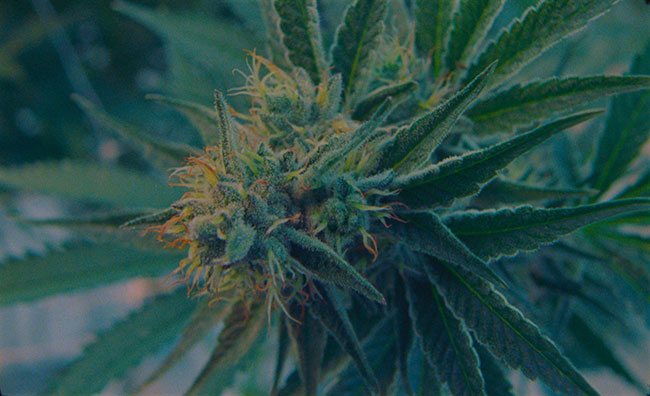
by Grow Up Conference | Dec 16, 2024 | Grow Opportunity, Media Partners
I started at this location in 2008 working for Village Farms International growing produce. Prior to that I worked at some other greenhouses, so I’ve been in the greenhouse industry since 2000. I studied a greenhouse management course. At the time, greenhouses were expanding rapidly in the late 90s and early 2000s; the vegetable industry really picked up here in Delta, British Columbia. Today at Pure Sunfarms, we’re currently cultivating in 1.65 million square-feet of greenhouse space.
The real advantage of growing in a greenhouse in B.C. is that even though it appears that it’s raining here all the time, the absolute humidity is actually very low. You can see that from the types of plants we have – like pine trees and spruce – that are drought tolerant. Generally, the air is very dry in B.C. We can keep the rain out and use the dry air to make the greenhouse air optimal for the plants. The fact that it rains a lot here is a benefit because we’re able to collect all that rainwater to feed the plants. We collect the runoff from plants so we’re not losing the fertilizers into the environment – they’re just going back into our plants.
The other benefit to growing in a greenhouse is that a lot of the wind that comes off the ocean in the summertime has a cooling effect, so the coastal climate doesn’t have as many extremes. The supplemental light we use is for the winter, especially in flower when the plants require more energy. Once you get to May, it’s not really worth it to run the lights, because you’ll get enough sunny days in between the cloudy days.
The importance of continued experimentation
Understanding what quality you’re trying to achieve is critical. The team is very important, as is learning through experimentation. We’re not solely using mechanics to make the climate inside. We depend on the air outside a lot. We don’t have air conditioners in the greenhouse; we’re trying to use the energy from the sun as well as the air outside and the physics of the greenhouse to make the climate inside. There’s also a local climate benefit. The wind coming off the ocean tends to blow the clouds away quickly, so we have a lot more sunlight hours in this area.
We’re constantly experimenting. Sometimes I run mini experiments because I want to see the limitations. I have to understand the limitations and the problems, and what caused them – pushing the boundaries of what’s possible to make continuous improvements. That gives us the parameters we need to be within. From those learnings, scaling up is easily done.
Research, development and innovation
We innovate in other ways as well. We have research partnerships with Simon Fraser University (SFU) and Langara College, and a lot of those experiments, they run them, and our teams direct them.
The experiments help with innovation and problem solving. With SFU, the kinds of innovation we collaborate on are more plant-related: disease management, IPM, and water sterilization. Unlike gardening, in farming you’re often battling bacteria, fungi, viroids and viruses, so you have to build a way that you’re protected from that into your system. With Langara, the work we do is more on the secondary side, like figuring out procedures and optimizing our product and manufacturing processes.
When thinking about AI as a tool for innovation, I’m interested in reaction time; the reaction time to the changing environment outside. This high-tech greenhouse is fully controlled by a climate system. Our expertise is setting the optimal parameters, which are constantly adjusted, especially when transitioning seasons. So, in using AI, I’m most interested in speeding up reaction times to maintain the optimal climate.
As far as choosing new cultivars, we have a system. What I learned during my time in produce is how to best run our climate and our system; the cultivar has to work within that system. We don’t try to change the system to make the cultivar work in it. Overall, we’re phenohunting in the greenhouse, trialing as many different cultivars as possible, and then we look at how it fits in our system, all the way to processing. It has to work in our climate, and it’s got to meet the consumer’s quality expectations.
We’re fortunate that we have an in-house lab that we can use to test all aspects of what we do, including trialing new products. I think this year we’ve already grown 1,000 different cultivars. Each pheno is different, and we have this ability to quickly assess them through trial. That’s something I’ve never been able to accomplish in produce previously.
At the end of the day to achieve brand loyalty, we need consistent great quality. And that’s our job, from farm to shelf, starting with cultivation.
VP of cultivation and operations, Rob Baldwin grows high quality plants with a passionate team of growers. He is responsible for all aspects of Pure Sunfarms’ cultivation and greenhouse operations, and continues to showcase world-class growing capabilities.

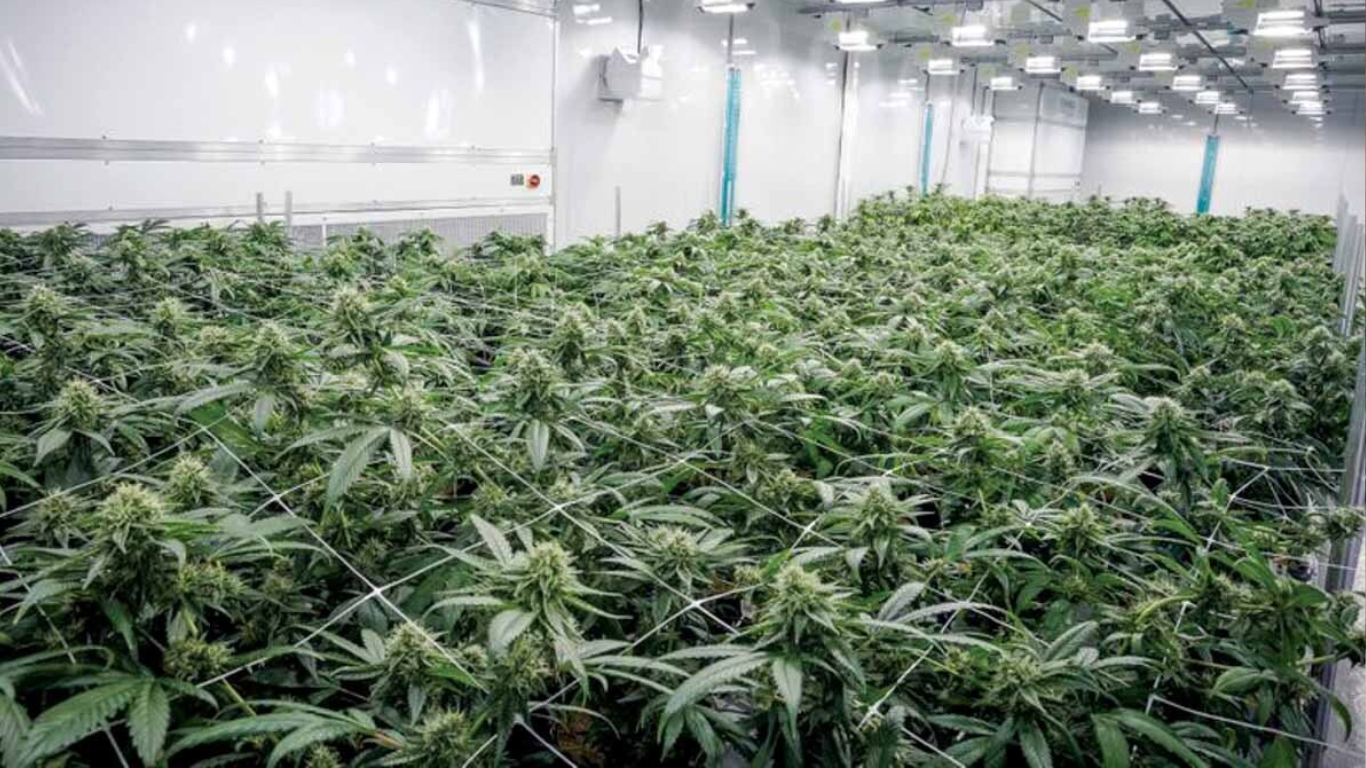






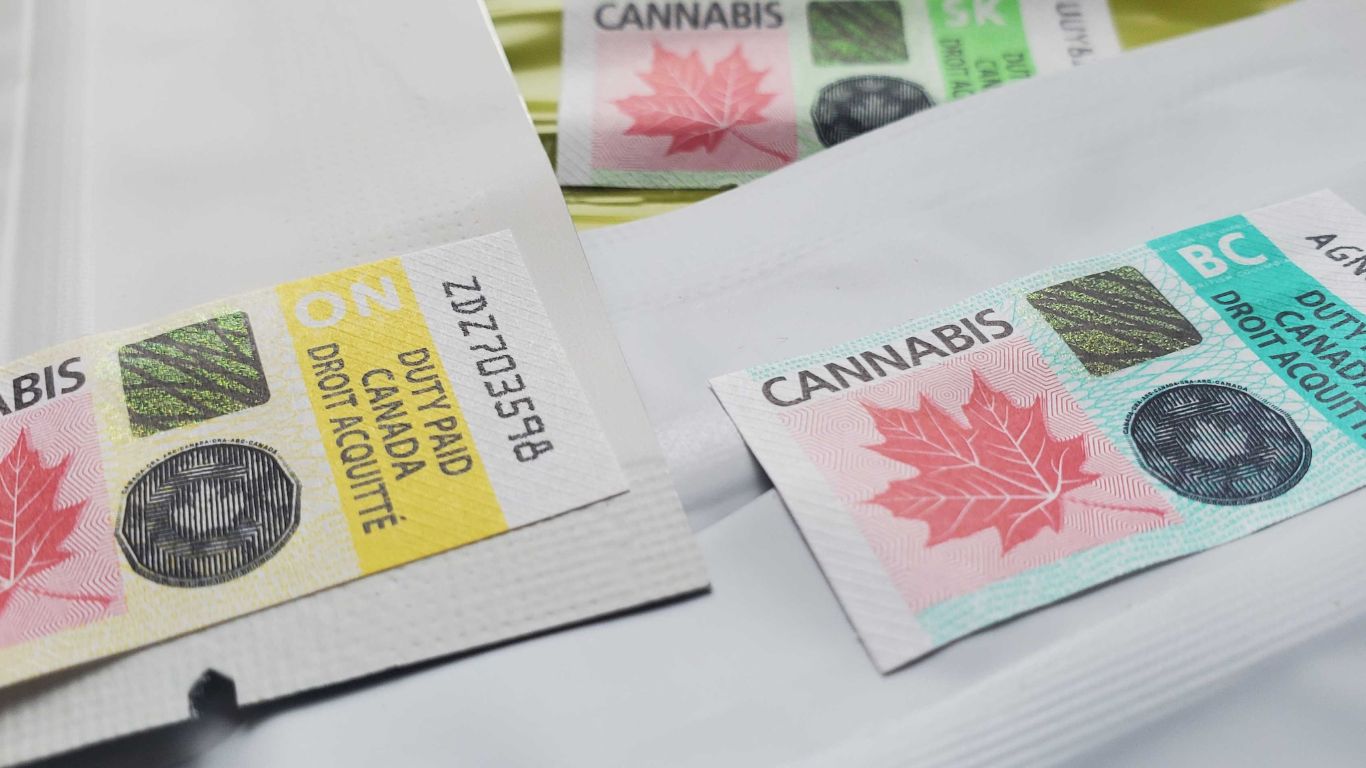






Recent Comments